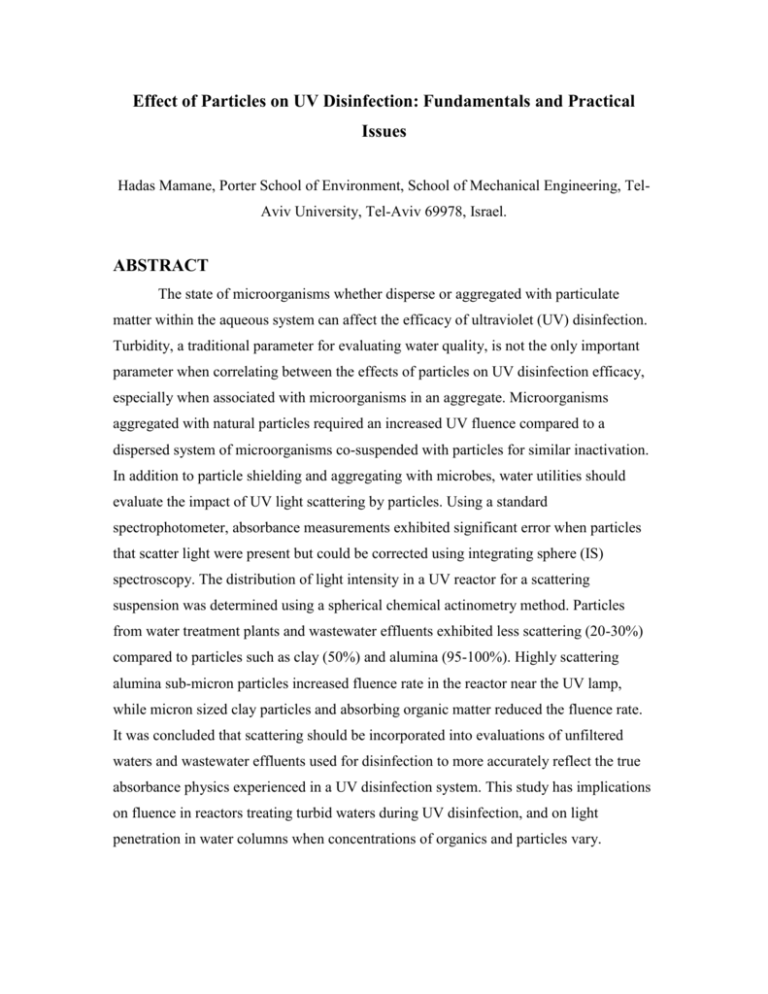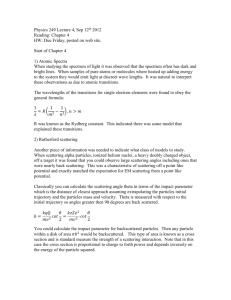Effect of particles on UV disinfection: fundamentals and practical
advertisement

Effect of Particles on UV Disinfection: Fundamentals and Practical Issues Hadas Mamane, Porter School of Environment, School of Mechanical Engineering, TelAviv University, Tel-Aviv 69978, Israel. ABSTRACT The state of microorganisms whether disperse or aggregated with particulate matter within the aqueous system can affect the efficacy of ultraviolet (UV) disinfection. Turbidity, a traditional parameter for evaluating water quality, is not the only important parameter when correlating between the effects of particles on UV disinfection efficacy, especially when associated with microorganisms in an aggregate. Microorganisms aggregated with natural particles required an increased UV fluence compared to a dispersed system of microorganisms co-suspended with particles for similar inactivation. In addition to particle shielding and aggregating with microbes, water utilities should evaluate the impact of UV light scattering by particles. Using a standard spectrophotometer, absorbance measurements exhibited significant error when particles that scatter light were present but could be corrected using integrating sphere (IS) spectroscopy. The distribution of light intensity in a UV reactor for a scattering suspension was determined using a spherical chemical actinometry method. Particles from water treatment plants and wastewater effluents exhibited less scattering (20-30%) compared to particles such as clay (50%) and alumina (95-100%). Highly scattering alumina sub-micron particles increased fluence rate in the reactor near the UV lamp, while micron sized clay particles and absorbing organic matter reduced the fluence rate. It was concluded that scattering should be incorporated into evaluations of unfiltered waters and wastewater effluents used for disinfection to more accurately reflect the true absorbance physics experienced in a UV disinfection system. This study has implications on fluence in reactors treating turbid waters during UV disinfection, and on light penetration in water columns when concentrations of organics and particles vary.









